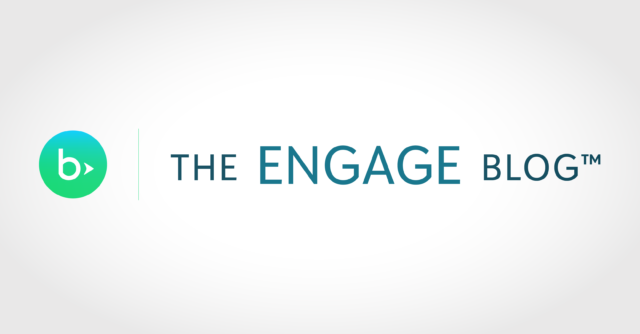Top Accounting Tips for Government Grants

Government grants operate differently than most other revenue streams. They come with strict compliance requirements, detailed reporting obligations, and potential penalties that could result in claw backs if you aren’t careful with your spending and documentation.
This guide covers the fundamentals that your finance team needs to know during every stage of the grant so you can handle it confidently from award to closeout.
Understanding the Grant Lifecycle for the Finance Office
Government grants follow a predictable journey, and the finance team plays a mission-critical role at each stage. Working with your program and development teams, your finance staff identifies funding gaps, supplies important budget numbers, sets up projects in your accounting software, establishes spending approvals, and creates reporting schedules.
Here are the key roles for your finance office throughout the government grant lifecycle.
Pre-Award
Your finance team’s involvement begins even before your organization identifies a funding opportunity. Here are steps you can take to set the foundation for successful accounting for government grants.
- Collaborate on budget development from day one: Work with your program, grant, and development teams to understand your funding gaps and opportunities to address new needs in your community that align with your mission.
- Know your numbers: Review any similar programs and calculate average cost per participant, personnel time allocation percentages, and indirect cost ratios to inform budget projections. If this is a new program, use estimates from peer groups or extrapolate them based on other programs. For example, if you normally run an after-school tutoring program and want to expand into a camp over spring break, talk with organizations running week-long camps for your age group and use your current costs to estimate the additional expenses.
- Establish your indirect cost rate: Calculate your cost rate and understand the de minimis rate available to your organization. If the de minimis rate doesn’t cover your indirect costs, identify other revenue sources to cover overhead—don’t assume program funds can absorb unbudgeted expenses.
- Set up systems and access: Ensure your fund accounting system can track restricted funds separately. You don’t want to be juggling spreadsheets trying to manage your grant award. Additionally, give program managers access to dashboards that show restricted fund balances, program balances, and budget-to-actual reports, allowing them to make informed decisions.
With this preparation, you’ll be ready to support your team in applying for new opportunities and be ready to manage the funds once they become available.
Want to set your organization up for success with government grant compliance? Check out our grant compliance checklist.
Award and Implementation
Proper tracking and documentation during implementation prevent costly audit findings and help secure future funding opportunities. To avoid any pitfalls, here are some best practices for managing the grant awards:
- Set up dedicated subfunds: Create separate project codes for every grant before spending begins. Track all expenses—direct and indirect costs—separately from other funding sources for simplified reporting and audit preparation.
- Maintain detailed documentation: Keep comprehensive records that link each grant expense to supporting evidence, such as timesheets for payroll allocations, receipts for supplies, and contracts for services. If possible, use your fund accounting system as your single source of truth for document management, so everyone has access to the same information.
- Know your revenue recognition requirements: Determine if your grant is conditional (milestone-based) or unconditional (available upon award). This affects revenue timing and cash flow planning. For reimbursable grants, ensure adequate operating funds before drawdown processing.
Detailed subfund accounting and accessible documentation will help you create the detailed reporting required by your funding agency.
Closeout
The grant closeout phase tests your financial management systems and documentation practices. Proper preparation protects against claw backs, preserves funder relationships, and positions your organization for future funding.
- Reconcile all fund balances: Review grant transactions to ensure proper coding, including restricted and unrestricted funds, so all appropriate expenses flow to your reports. Address budget variances and determine how you will spend any remaining funds according to grant terms.
- Generate comprehensive final reports: Create financial statements matching the funder’s format with detailed expense categories and budget-to-actual comparisons. Pay close attention to the due dates and make sure you meet any deadlines.
- Complete pre-audit preparation: Review documentation for completeness before submitting final reports and address common issues, such as missing timesheets or incorrect cost allocation. If your organization received more than $1,000,000 in government grants, you will be subject to a single audit in addition to your regular annual financial audit.
Do a quick post-mortem of the grant with your team to understand what went well and what needs to be tweaked before taking on another grant.
How Does Government Grant Accounting Differ from Other Funding Sources?
Government grants operate under a fundamentally different financial framework than private donations or earned revenue.Federal funders establish specific metrics that finance teams must track and report consistently. Unlike private donors who often accept narrative updates, government grants require precise data collection on predetermined outcomes. Also, non-compliance can result in fund claw backs and suspension from future funding, not to mention damaged relationships.
Because of those stringent compliance requirements, government grants demand comprehensive financial reports with line-item detail, often quarterly. You must demonstrate not just how funds were spent, but also why each expense was necessary and allowable under federal guidelines.
Top 3 Government Grant Accounting Best Practices
These three fundamental practices help form the foundation of successful accounting for government grants.
1. Review Award Terms and Create Action Items
Award documents contain the roadmap to success—but only if you extract and operationalize the critical details. Missing key requirements or deadlines can result in loss of funding that can impact the communities you serve.
To avoid that, read all the award terms and create action items around:
- Dates: Create calendar entries for quarterly reports, annual reports, and final reports, with 30-day, 14-day, and 7-day advance reminders.
- Spending restrictions: Identify any unusual spending restrictions or pre-approval requirements that differ from standard federal guidelines.
- Compliance triggers: Document termination clauses and any specific conditions or failures that could trigger them.
2. Build Comprehensive Tracking and Oversight Systems
Effective grant management requires your finance team to continuously monitor your financial performance and compliance status. Smart fund accounting systems provide real-time visibility and free up time for strategic analysis rather than data compilation.
- Configure automated reporting: Set up your system to generate reports in the funder’s exact required format with automated budget threshold alerts.
- Create integrated dashboards: Build displays that show the percentage of budget spent by category, days remaining in the grant period, and outstanding invoices over a certain threshold. Share these dashboards with your program team so they can make informed spending decisions.
- Set up monitoring systems: Create automated alerts for budget thresholds, spending variances, and approaching deadlines.
3. Foster Finance and Program Team Collaboration
Regular collaboration between finance and program teams can prevent costly mistakes and ensure alignment throughout the grant period. Here are a few tips to foster this teamwork.
- Establish a communication structure: Schedule monthly finance-program meetings and create standing agenda items for spending pattern reviews, upcoming expense discussions, and compliance issue resolution.
- Provide access and transparency: Give program managers view-only access to budget reports, financial dashboards, and real-time spending data through your accounting system.
- Offer training and education: Conduct quarterly training sessions to teach program staff about allowable expenses, documentation standards, and how their decisions impact compliance.
Simplify Grant Management with a Purpose-Built Fund Accounting Solution
Accounting for government grants doesn’t have to overwhelm your finance team. With proper planning, appropriate systems, and systematic approaches, you can manage grants efficiently while maintaining full compliance.
Fund accounting software with subfund capabilities, like Blackbaud Financial Edge NXT® eliminates these workarounds with native capabilities designed for nonprofit financial management. Easily allocate grant expenses to correct subfunds, generate financial reports in funder-required formats, and establish compliance dashboards to provide real-time visibility into spending and deadlines.
Ready to streamline your grant management process? Download our Managing Government Grants guide for proven strategies to maintain compliance and optimize reporting workflows.
Accounting for Government Grants: FAQs
What are the best practices for government grant accounting?
Set up dedicated subfunds upon award, maintain detailed expense documentation, implement automated reporting, and establish regular finance-program communication. Plus, be sure to verify requirements before spending and create compliance calendars with advance reminders.
How does grant management differ from other revenue streams?
Federal funding requires strict compliance. Unlike regular accounting, grant management requires separate tracking of restricted funds, detailed audit trails, and funder-specific reporting formats.
What are the key federal grant compliance accounting requirements?
Federal grant compliance requires subfund tracking, detailed expense documentation, accurate cost allocation, and timely reporting in prescribed formats.
What are the most effective grant fund tracking methods?
Use fund accounting software with subfund capabilities, automated budget dashboards, expense pre-approval workflows, and real-time reporting systems.


